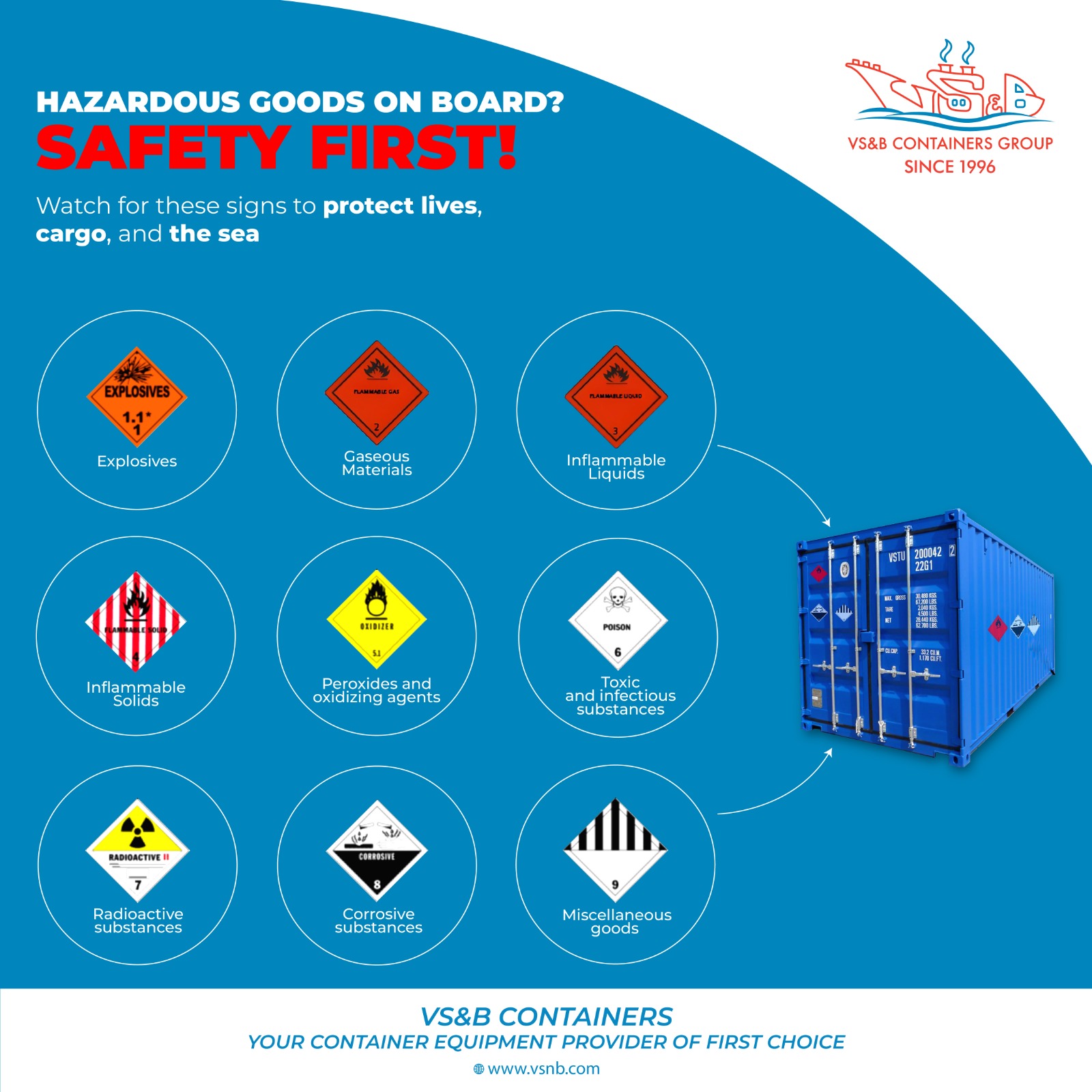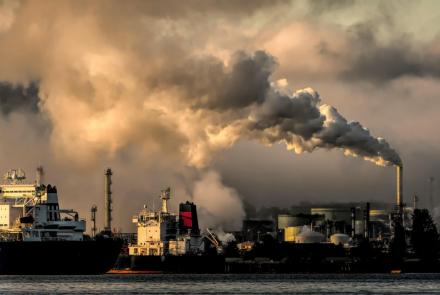Understanding Hazardous Cargo: Types, Classifications, and Regulations

Shipping hazardous cargo requires a deep understanding of the types of dangerous goods, their classifications, and the stringent regulations that govern their transportation. As a trusted name in container shipping, VS&B Containers aims to educate businesses and shippers on the essentials of hazardous cargo management. Proper knowledge and adherence to regulations can help ensure safe and compliant transport of hazardous materials, minimizing risks to both people and the environment.
What is Hazardous Cargo?
Hazardous cargo refers to any substance or material that poses potential risks to health, safety, property, or the environment during transport. These goods may include chemicals, gases, flammable liquids, explosives, and radioactive materials. When shipping hazardous cargo, it’s essential to understand the specific risks associated with each type and follow the proper protocols to mitigate potential hazards.
Types of Hazardous Cargo
Hazardous cargo can be divided into various categories based on the nature of their risks. Here are some common types:
-
Flammable Liquids: This includes substances like gasoline, diesel, and alcohol. These goods are highly combustible and require careful handling.
-
Explosives: Materials like fireworks, ammunition, and other explosive substances fall into this category. Special containers and handling methods are essential for their safe transportation.
-
Gases: Compressed gases, such as propane and oxygen, are hazardous due to their pressurization and potential for flammability or toxicity.
-
Corrosives: Substances like acids and cleaning agents can cause severe damage upon contact. These require secure packaging to prevent leaks and spills.
-
Toxics and Poisons: Chemicals like pesticides, insecticides, and some industrial chemicals fall into this category. They pose health risks upon exposure and require strict handling and packaging.
-
Radioactive Materials: This includes materials that emit radiation, often used in medical and industrial applications. These materials require highly specialized containers for transport to protect people and the environment from radiation exposure.
-
Oxidizing Agents and Organic Peroxides: These are materials that may not be flammable themselves but can cause or accelerate combustion. Examples include hydrogen peroxide and ammonium nitrate.
Hazardous Cargo Classifications
Hazardous cargo is classified under international standards to help identify and manage these goods safely. The International Maritime Dangerous Goods (IMDG) Code, developed by the International Maritime Organization (IMO), provides a comprehensive classification system. The IMDG Code divides hazardous cargo into nine classes:
- Class 1: Explosives
- Class 2: Gases (flammable, non-flammable, and toxic gases)
- Class 3: Flammable Liquids
- Class 4: Flammable Solids
- Class 5: Oxidizing Substances and Organic Peroxides
- Class 6: Toxic and Infectious Substances
- Class 7: Radioactive Material
- Class 8: Corrosive Substances
- Class 9: Miscellaneous Dangerous Goods
Each class has specific handling, packaging, and labeling requirements to ensure safe and compliant transport. Proper classification is essential, as it determines how the cargo should be packed, stored, and transported.
Key Regulations Governing Hazardous Cargo Shipping
Transporting hazardous cargo is regulated by various international and national bodies to ensure safety. Some of the most critical regulations include:
-
IMDG Code (International Maritime Dangerous Goods Code): This is the primary set of rules governing the transportation of hazardous cargo by sea. It includes standards for classification, labeling, packaging, and documentation.
-
ADR (European Agreement Concerning the International Carriage of Dangerous Goods by Road): This set of regulations governs the road transportation of hazardous cargo in Europe and includes rules on packaging, vehicle requirements, and safety equipment.
-
IATA DGR (International Air Transport Association Dangerous Goods Regulations): For air transport, the IATA DGR outlines safety measures for hazardous cargo, including packaging, labeling, and documentation requirements.
-
49 CFR (Code of Federal Regulations, Title 49): In the United States, Title 49 regulates the transportation of hazardous materials by rail, road, and air, covering a wide range of safety protocols and penalties for non-compliance.
-
SOLAS (Safety of Life at Sea Convention): Although primarily focused on maritime safety, SOLAS also mandates requirements for the transportation of dangerous goods, aiming to reduce risks to vessels and crew members.
-
Container Safety Regulations: Specific regulations are in place for containers carrying hazardous cargo, such as the requirement for vented containers for certain classes of dangerous goods. Container security standards and testing protocols help ensure containers can withstand the transportation of hazardous substances.
Importance of Proper Packaging and Labeling for Hazardous Cargo
One of the key components of hazardous cargo management is packaging and labeling. Incorrect packaging or labeling can result in accidents, legal penalties, and delays. Here’s what shippers need to keep in mind:
-
Proper Packaging: Hazardous cargo must be packed in approved materials that can contain potential leaks, prevent exposure, and withstand rough handling. The packaging requirements vary by hazard class and are governed by regulations like the IMDG Code and IATA DGR.
-
Accurate Labeling: Labels provide crucial information about the contents of the container. Hazard labels must indicate the class, UN number, and specific handling instructions for the cargo. Mislabeling can lead to accidents and poses serious legal consequences.
-
Documentation: Shipping hazardous cargo involves extensive documentation, including Material Safety Data Sheets (MSDS), packing lists, and certifications. This paperwork must be accurate and comply with the regulations of the transit countries.
Benefits of Compliance with Hazardous Cargo Regulations
Following regulations for hazardous cargo is not just a legal obligation but a means to enhance safety, protect the environment, and maintain a company’s reputation. Here’s how compliance benefits the industry:
-
Reduced Risk of Accidents: By following the standards for handling hazardous cargo, shippers reduce the risk of incidents that could endanger lives, property, and the environment.
-
Smooth Supply Chain Operations: Compliance helps ensure smooth transportation and minimizes delays or penalties due to regulatory issues.
-
Enhanced Company Reputation: Companies that prioritize safety and compliance in hazardous cargo transport build trust with their customers, partners, and regulatory bodies.
-
Cost Savings: Avoiding fines and potential clean-up costs associated with hazardous cargo spills can result in significant cost savings for companies.
How VS&B Containers Supports Safe Hazardous Cargo Shipping
At VS&B Containers, we are committed to promoting safe and compliant transportation solutions for hazardous cargo. Our containers are designed and maintained to meet international safety standards, making them ideal for shipping dangerous goods. With a focus on container durability, customization, and compliance, VS&B provides containers that meet the unique needs of hazardous cargo transportation.
Whether you need guidance on container selection, packaging requirements, or regulatory compliance, our team of experts is here to support you. Choose VS&B Containers for safe and secure hazardous cargo shipping solutions.
Understanding hazardous cargo classifications, types, and regulations is crucial for businesses involved in container shipping. By prioritizing safety and compliance, companies can navigate the complexities of hazardous cargo transportation effectively. At VS&B Containers, we’re here to assist you in all aspects of container shipping, ensuring your hazardous goods are transported safely and efficiently.
Looking for the right container solution for hazardous cargo? Contact VS&B Containers today to discuss your requirements!
VS&B Containers group offers both standard and custom-made containers, delivered directly from the factory to your desired location. With a fleet of over 30,000 containers made available across Europe and Asia, the company helps customers get containers effortlessly from anywhere in the world. If you have unique needs in terms of affordability, adaptability, and potential return on investment, please drop an email to traders@vsnb.com, and the VS&B team will contact you to discuss further.
- Log in to post comments






